By: Rob Mulder
For: www.europeanairlines.no
In this article we highlight the history of the Handley Page O/400, G-EAKE. It was one of many Handley Page O/400s that spread its wings across Europe in order to establish political influence in the aviation of neutral states. The particular aircraft was involved in the race for the first flight between Kristiania (Oslo) and Stockholm. It was important for the young nation (as Norway was) to show its flag abroad.
What an aircraft!
The aircraft I talk about here was the Handley Page O/400. What an aircraft! Personally, I regard this huge twin-engined biplane as one of the finest and most impressive aircraft of the post-War (i.e. Great War, 1914-1918) era. It was of course only the first attempt to build a civil airliner. Forty-three bombers were converted for civil use and thirty-four were registered in Britain. All aircraft were registered to Handley Page Ltd at Cricklewood. The civil version of the bomber spread its wings across Europe and flew among other states to Denmark, Norway, Sweden and Poland.
Two years before the end of the Great War (October 1916) Georges Holt Thomas started to work on his plans for commercial aviation after the war. His plans were to be ready at the end of the war. But the sudden end of the Great War in November 1918 and the prohibition of civil aviation hampered the effectuation of his plans. He had to wait until the ban was lifted (May 1919). Handley Page Ltd started now the conversion of its O/400 and V/1500. The first aircraft to be converted were four O/400s with the military identities: D8350, F5414, F5417 and F5418. They were stripped from their military equipment and then simple seats were installed. One of these aircraft was used for demonstration purposes in Scandinavia.
The Norwegian connection
 In 1878 a boy was born in the lovely city of Trondheim. His name was Wilhelm Meisterlin. His grandfather emigrated from Germany to Trondheim and started a liquor factory. After Wilhelm Meisterlin took over the factory … he closed it down. Why? Wilhelm Meisterlin did not drink! In stead, Wilhelm Meisterlin moved to South Africa and fought as a 21-year old man on the English side during the Boer War (1899-1902). Here he met Winston Churchill. He ended the war and the English Army with the rank of Captain and has ever since called himself Captain Meisterlin. During the Great War the near two metres high man worked for the Norwegian government and travelled regularly to the United Kingdom. Wilhelm Meisterlin was a tall person and a former director of the parent company Meisterlin AS, Wilhelm Ramm told me in an interview “… He was the only man who could tip an English bobby with half-a-crown. Because of his impressive height the bobby was so surprised that he could not respond before Meisterlin was long gone”. During October and November 1918 he met with Handley Page and Meisterlin became general agent for Scandinavia. The two agreed also to fly after the war an aircraft to Scandinavia on a demonstration tour. The co-operation resulted also in the import of three Norman Thompson N.T.2Bs from the surplus stocks in the UK (1920). The flying boats were to be used on the scheduled air service Kristiania (up to 1925 the name of Oslo) to Göteborg (Gothenburg) and København (Copenhagen). The same year Handley Page and Wilhelm Meisterlin planned to form an Anglo-Norwegian airline company with a stock capital of 300,000 Norwegian Crowns. Handley Page Ltd would supply 66.6 % and Wilhelm Meisterlin 33.3 %. In addition to the above-mentioned air service the plan was also to operate an air service from København to London (operated by Handley Page Ltd). The company was never formed and the air services never opened by the companies.
In 1878 a boy was born in the lovely city of Trondheim. His name was Wilhelm Meisterlin. His grandfather emigrated from Germany to Trondheim and started a liquor factory. After Wilhelm Meisterlin took over the factory … he closed it down. Why? Wilhelm Meisterlin did not drink! In stead, Wilhelm Meisterlin moved to South Africa and fought as a 21-year old man on the English side during the Boer War (1899-1902). Here he met Winston Churchill. He ended the war and the English Army with the rank of Captain and has ever since called himself Captain Meisterlin. During the Great War the near two metres high man worked for the Norwegian government and travelled regularly to the United Kingdom. Wilhelm Meisterlin was a tall person and a former director of the parent company Meisterlin AS, Wilhelm Ramm told me in an interview “… He was the only man who could tip an English bobby with half-a-crown. Because of his impressive height the bobby was so surprised that he could not respond before Meisterlin was long gone”. During October and November 1918 he met with Handley Page and Meisterlin became general agent for Scandinavia. The two agreed also to fly after the war an aircraft to Scandinavia on a demonstration tour. The co-operation resulted also in the import of three Norman Thompson N.T.2Bs from the surplus stocks in the UK (1920). The flying boats were to be used on the scheduled air service Kristiania (up to 1925 the name of Oslo) to Göteborg (Gothenburg) and København (Copenhagen). The same year Handley Page and Wilhelm Meisterlin planned to form an Anglo-Norwegian airline company with a stock capital of 300,000 Norwegian Crowns. Handley Page Ltd would supply 66.6 % and Wilhelm Meisterlin 33.3 %. In addition to the above-mentioned air service the plan was also to operate an air service from København to London (operated by Handley Page Ltd). The company was never formed and the air services never opened by the companies.
By Handley Page O/400 to Denmark and Norway
The aircraft picked to fly to Norway was the Handley Page O/400, G-EAKE. It had originally been built for the RAF (under Contract No 35a/3358/C3929) by Birmingham Carriage Co Ltd with serial J2252, but due to the sudden end of the Great War placed in storage. On August 14, 1919 the aircraft had been purchased by and registered (Certificate of Registration – CofR) to the Handley Page Ltd and partially converted to civil standards with ten seats and no windows. Two days later it received its Certificate of Airworthiness (CofA) and was made ready for the Scandinavian tour.
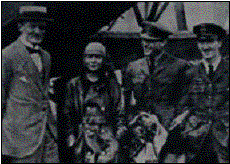 |
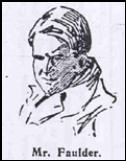 |
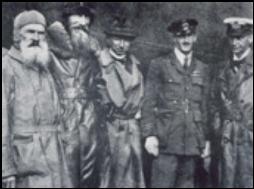 |
The crew for the flight was selected: The English officer J Stewart and the Norwegian RAF-officer Tryggve Gran (the first man to cross the North Sea by an airplane (a Blériot named Ça Flotte on July 31, 1914). Handley Page had talked at an early stage with Tryggve Gran about a flight to Scandinavia and after Grans return from the USA the tour to Norway could start. Beside the crew Captain Wilhelm Meisterlin and the parachute jumper Fouldner joined as passengers. Tryggve Gran had taken his charming English wife along as well. As mechanics Mr Donovan and Mr Milne participated.
The Handley Page O/400 left Cricklewood on Saturday August 16, 1919 for the Scandinavian demonstration tour (other sources mention August 24). Stewart and Gran flew the aircraft for the first leg from Cricklewood to Soesterberg, the military airfield of the Netherlands and a regularly used stop for aircraft crossing the Netherlands. The group received a warm welcome and was given a good meal in the officer’s mess. They left Soesterberg and continued towards København (Copenhagen). They flew in the direction of Bremerhaven (Germany), but due to the late departure from Soesterberg they had to make an extra-ordinary stop on the island of Langeland, just north of the sea called Kieler Bucht and south of the island Sjælland (Zealand), the island where København is situated. Again they had to stay overnight. A huge crowd had by then already gathered at Kløvermarken. The delay led to some unrest among this group. Once the crowd understood that the aircraft would not come small riots brook out. They started to throw stones on the Farman F 60 Goliath of Mr Krause-Jensen that stood parked in front of one of the hangars. Police interfered and spread the crowd. But the riots did not end here. A group went to the Amager railway station and occupied the railway tracks. Trains were halted and again the police had to spread the crowd. During the night others returned to the airport and tried to light one of the hangars. Luckily they failed.
On August 18 the Handley Page and its passengers departed for the last leg to København and landed at 9.30 am at the Danish Army airport Kløvermarken. The Handley Page O/400 was after the Farman Goliath of Mr Krause-Jensen, the largest aircraft to land at Kløvermarken. A large crowd had again come to the airport. The Commander of the Danish Air Force Lt-Col Koch welcomed them on behalf of the Danish State.
The original plan was to make some demonstration flights at Kløvermarken and than proceed directly to Kristiania, Norway, stay there for two weeks and proceed via Stockholm back to København and Cricklewood. But during their stay in København several provincial towns in Denmark urged Captain Meisterlin to come to their city for a demonstration flight. It was therefore decided to make an intermediate stop at Århus instead of flying directly to Kristiania. During the week it stayed in København. On Tuesday August 19 Mr Fouldner made several jumps from the aircraft and numerous joy ride flights were made with the aircraft. Wednesday, Thursday and Friday were also used for joy ride flights and among the passengers were members of the Danish Flyvekommission (Air Board, see picture on the left, showing Captain Stewart (second from the right) with Danish admiral and two MPs) took a flight with the aircraft.
Finally to Kristiania
On Saturday August 23 the aircraft departed from Kløvermarken for a flight to the most important city of the mainland (Jylland – Jutland) Århus for more demonstration flights. The flight turned out to be a demanding flight. After departure from København they encountered strong winds and decided to climb to a higher stratum of air. Near Kallundborg they set course to the island of Fyn and flew along the northern coast of the island to the mainland. The east coast of Jylland was passed at a height of 3,000 metres and they finally arrived at Skejby Mark, a field outside Århus at 1 pm. Several hundred spectators awaited the aircraft. A one-hour stop was scheduled, but the strong winds forced the crew and the passengers to extend their visit. The start was delayed until the next day. On Sunday at 9 am the giant airliner departed for Kristiania, a trip expected to take four hours and twenty minutes. But after a short flight, they were again forced to make an extra-ordinary landing this time at Klitgaard, four kilometres south of Aalborg. The reason was a storm above the Skagerak (the stretch of water between Denmark and Norway). After a night in a green Danish meadow the Handley Page was ready for take-off and commence on the last part of his journey to Norway. Just after 10 am Tryggve Gran took off and flew in northern direction in 1,000 metres height. After a 3,5 hours trip he landed the aircraft at Gardermoen, 40 km north of Kristiania. This airfield is generally known as the site where the well-known polar explorer Roald Amundsen crashed his first aircraft on his exam flight on July 14, 1914. He later took his licence in another plane. But that is another story.
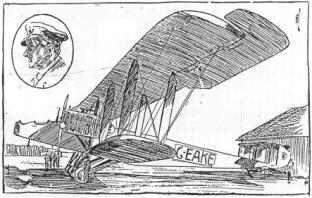 |
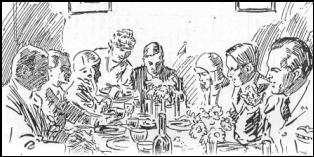 |
Tryggve Gran landed the large bird at 1.25 pm. After the landing the party was escorted to a nearby hotel for a well-deserved lunch (see drawing). Two Norwegian lieutenants Bøhn and Leif Feiring wanted to fly from Kjeller to Gardermoen to see the Handley Page O/400 and have a glimpse of the Norwegian legend Tryggve Gran. Unfortunately, they were forced to make an extra-ordinary landing due to engine trouble. They just managed to avoid a dike during the landing and had to abandon their aircraft and walk back. The enthusiasm in Kristiania was unbelievable. At that time it was the largest aircraft ever to have landed in Norway. Its two 360 hp engines used 120 litres petrol per hour and it could stay 10-12 hours in the air. After the earlier mentioned lunch the Norwegian press was given an introduction of the aircraft, but no further flights were made. A journalist was not quite known with the registration system and wondered what the name “G-EAKE” on the fuselage meant. He probably never got the answer. He thought it was a funny name for an aircraft.
At 3.30 pm the pilots left by car to look for a landing place of at least 300 m² nearby Kristiania. They visited some sites, but could not find one big enough. Therefore it was decided to transfer the aircraft to the military airfield of Kjeller. On Friday August 29 at around 5 pm the aircraft was flown to Kjeller, a short flight only.
Finally flying above Kristiania
The whole week after their arrival in Kristiania the newspapers swept up their readers that the aircraft would soon start to make demonstration flights. On Saturday August 30, the telephone was red hot at the office of the main Norwegian newspaper Aftenposten. People were asking, “Will the Handley Page take off today?” and “Will they fly in accordance to plan?” and finally they could say, “Yes, today it will take place”. The excitement increased further and at 2 pm a small black dot in the air could be seen approaching the capital of Norway from the northern direction. After a few minutes the long-awaited Handley Page was above Kristiania for a short demonstration flight. The pilot on this flight was Captain Stewart and after some turns above the capital he continued in northern direction to Kjeller. Hundreds of nobilities and spectators travelled by car and extra trains to Lillestrøm and Kjeller Airport to have a look at the aircraft. Children were climbing in trees to have a glimpse. Just after 4 pm the roaring of the engines wakened up the crowd and the excitement rose to unforeseen heights. The aircraft took off gently and climbed into the air. Captain Stewart steered the aircraft as if it was a small biplane and the sight impressed people. He crossed the airfield at low altitude and just above the heads (and hats) of the spectators. Shortly afterwards he touched down on the runway and taxied towards the crowd.
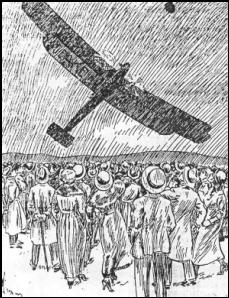 |
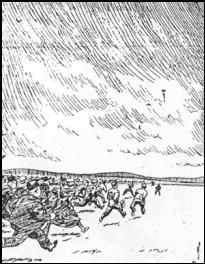 |
Now Captain Stewart commenced with the joy ride and demonstration flights with the guests. Some 7-8 trips were made and among the passengers were the cabinet minister Hauan and his wife as well as members of the British legation in Kristiania. After the flights it was Mr Faulders turn to show the use of the parachute. With a smile on his face he walked to the aircraft and entered it. Captain Stewart took off and rapidly climbed to the required height. He quickly turned off and on his engine as a sign to Fauldner that he could make his jump. Through a hole in the fuselage one could barely see his legs but suddenly he jumped out of the aircraft. The crowd on the ground saw him crashing to a certain death when suddenly the parachute folded out and made Mr Faulders glide down. The crowd started to run towards the landing site and a nerve breaking show came to an end, but for Mr Fauldner his hour of glory started. After the landing he just said, “Hello – I am all right!”. He folded up his parachute and was carried back on the shoulders of some strong gentlemen to the airport where the crowd cheered him. Stewart had already earlier said, “He is the bravest of us all, this one!” and Mr Fauldner just smiled and responded, “Well, you get used to it, you see!”.
The following day at 12 noon Stewart started a new demonstration flight with among the guests the cabinet ministers Aavatsmark and Stuevold-Hansen and naval captain Von der Lippe (Chief Commander of the Navy’s Air Force) and lieutenant Hjalmar Riiser-Larsen. The demonstrations went fine and some 112 passengers were carried those days.
A longer stay than scheduled
Even in those early days after the Great War it was not allowed to fly wherever you wanted to. One still needed a permit from a Government. In order to be able to fly to Stockholm, Captain Meisterlin turned to the Swedish airline company Svensk Lufttrafikaktiebolaget – SLA to ask them to assist with the application. On August 7, 1919 SLA applied on behalf of Captain Meisterlin for a permit to let the Handley Page O/400 fly across Sweden in the period August 10 to September 1. As pilot the application mentioned … Captain Meisterlin. This is surprising since we have so far no evidence that Captain Meisterlin had a flying certificate. It as planned to fly to Malmslätt (Sweden) for demonstration flights for the Swedish Army, followed by a flight to Stockholm. The permit was granted on August 15. The delay of the aircraft to Kristiania made it impossible to use this permit and it was therefore renewed. SLA reported this to Captain Meisterlin on September 5. He could now fly the “Handley Page G-AKE” (wrongly quoted in the permit) across Sweden on the stretch Kristiania – Karlstad – Örebro – Stockholm (Häsgerstalund).
Meanwhile, the Handley Page was made ready for what was to become the first flight between Kristiania and Stockholm.
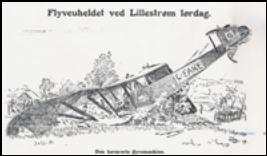 On Saturday, September 6 Captain Stewart and Major Tryggve Gran entered the aircraft. As passengers Captain Wilhelm, the two mechanics Donovan and Milne boarded the aircraft together with Mr Fauldner and Mrs Gran. The engines were started and ran well and the elegant aircraft departed smoothly from the airfield. Right after take-off the aircraft was forced to make an emergency landing. There was some wind and the aircraft had problems gaining height. After a few hundred metres and at a height of just 30-40 metres the “cog-wheel” in the left engine broke. Had the aircraft been at a higher altitude Captain Gran could have landed the aircraft, but now it lost height, hit some treetops with its undercarriage and ploughed its noose into a potato field destroying the potato harvest of one of the local farmers. One witness report said that the aircraft started to move sideways to the left and right through the air and eventually landed with its noose first into the field destroying the noose and parts of the wings. Upon landing it made a turn and stopped. Two passengers bailed out from the noose, while the other five managed to get out by themselves. The aircraft stood with its tail in a 45º angle. An ambulance soon arrived but none of the passengers needed any treatment. During its final moments Tryggve Gran managed to avoid landing on a house. The place of the accident was Volla, just outside the centre of Lillestrøm. For the record, the aircraft crash landed near Lillestrøm and not Lillesand as in so many publications has been mentioned. Lillesand is also a city in Norway, but situated near Kristiansand some 300 km off course. As the Norwegian newspaper drawing shows the site was near Lillestrøm.
On Saturday, September 6 Captain Stewart and Major Tryggve Gran entered the aircraft. As passengers Captain Wilhelm, the two mechanics Donovan and Milne boarded the aircraft together with Mr Fauldner and Mrs Gran. The engines were started and ran well and the elegant aircraft departed smoothly from the airfield. Right after take-off the aircraft was forced to make an emergency landing. There was some wind and the aircraft had problems gaining height. After a few hundred metres and at a height of just 30-40 metres the “cog-wheel” in the left engine broke. Had the aircraft been at a higher altitude Captain Gran could have landed the aircraft, but now it lost height, hit some treetops with its undercarriage and ploughed its noose into a potato field destroying the potato harvest of one of the local farmers. One witness report said that the aircraft started to move sideways to the left and right through the air and eventually landed with its noose first into the field destroying the noose and parts of the wings. Upon landing it made a turn and stopped. Two passengers bailed out from the noose, while the other five managed to get out by themselves. The aircraft stood with its tail in a 45º angle. An ambulance soon arrived but none of the passengers needed any treatment. During its final moments Tryggve Gran managed to avoid landing on a house. The place of the accident was Volla, just outside the centre of Lillestrøm. For the record, the aircraft crash landed near Lillestrøm and not Lillesand as in so many publications has been mentioned. Lillesand is also a city in Norway, but situated near Kristiansand some 300 km off course. As the Norwegian newspaper drawing shows the site was near Lillestrøm.
Shortly afterwards the mechanics started to dismantle the wings from the aircraft for transportation back to Kjeller. The aircraft was transported back to Kjeller and the flight to Stockholm was subsequently cancelled.
Captain Stewart and Captain Meisterlin went later that month back to Cricklewood to investigate the possibility to rebuilt the aircraft and restore it back into flying condition. For the repair of the aircraft material from Cricklewood was sent to Norway. New wings and a new nose were transported by ship and lorry to Kjeller. Since there was no hangar big enough to house the Handley Page O/400, the repairs had to be done in the open air.
Captain Meisterlin thought it would be possible to repair the aircraft in time for a flight to Stockholm later that year and asked via SLA for an extension of the permit to December 1, 1919. He now also requested to fly from Stockholm to København. This permission was granted on October 31. That month the aircraft was finished, but no flying would take place in 1919 and the demonstration tour was postponed to the spring of 1920. During the winter of 1919-20 the aircraft was stored at Kjeller Airport.
The air race to Stockholm
Every spring the Kjeller airfield was flooded and therefore the Handley Page O/400 had to wait for the water to disappear from the airfield before it could start for a new demonstration flight to Stockholm. Major Tryggve Gran had returned to the UK so a new pilot had to be found. The Norwegian pilot lieutenant Brynjulf Gottenborg was willing to step in. He was instructed how to fly the aircraft and made in June 1920 several trial flights from Kjeller and above Kristiania.
Before we continue we return to the UK, where Major Tryggve Gran was interested to join a flight from the UK to Stockholm (the capital of Sweden). He met his friend Captain Larry Carter in London. Carter was looking for a suitable aircraft to make a flight from England to Stockholm (Sweden). He found a biplane of the type Armstrong Whitworth F.K.8 powered by a 160 hp Breadmore engine. Carter bought the aircraft for nearly nothing since he knew the manager of the depot whose life he once had saved. The Dutch designer First Koolhoven in service with Armstrong Whitworth had designed the F.K.8. It was a larger version of the F.K.3 and was built in considerable numbers. On June 9, 1920 Major Tryggve Gran had the aircraft registered (CofR number 537) on his name as G-EATP (previous identity H4600). No CofA had been issued thus suggesting that the aircraft was to be exported. Larry Carter flew the heavy loaded aircraft from Hounslow at Dover, where he met Major Tryggve Gran for the flight to Norway. At some moment the aim of the expedition was changed from a non-stop flight to Stockholm to a non-stop flight to Kristiania. It is not clear why, but it is likely that since Tryggve Gran wanted to be the first to fly from Kristiania to Stockholm, the aim was changed.
No non-stop flight to Sweden or Norway
On June 20 the two friends departed England. There are conflicting reports about where they took-off: Tryggve Gran writes in his book that the transferred the aircraft from London to Dover and departed from there on June 17. He writes that they flew across France and Belgium to lose their way above northern Germany (Holstein). In a contemporary newspaper article it is written that Gran and Carter left London on June 20 and planned to fly directly to Kristiania, but that bad weather and winds forced them off course. They could finally orientate themselves once they came above Holstein, where they landed near Rendsburg. What is certain is that the strong winds en route pressed the aircraft off course and at 10 am they reached the coast of Holstein. They put the aircraft down near the German city of Rendsburg. By now they were in need of petrol and bought some from a German farmer. Despite his assurance that the petrol was of a high quality, the engine had problems accepting the petrol. For the last 70 kilometres to the German-Danish border they had to go down seven times! (Gran writes in his book seven days) On these extra-ordinary landings they had to clean the engine. They eventually reached Fredericia in Denmark, where they got hold of new and better quality petrol. Finally, they could proceed to Århus for an overnight. By now the calendar showed June 23.
The next day they tested the engine, but Gran had forgotten to fill up the cooling water and the engine stopped again. After a fast repair, the aircraft was ready for take-off. In the evening of June 24, Rolf Thomessen, the editor of the Norwegian magazine Tidens Tegn (Sign of time), called Major Tryggve Gran and he told them that the Handley Page O/400 of Captain Meisterlin was ready for the first flight to Stockholm. If they wanted to beat them they had to come to Kristiania as soon as possible. Therefore, they decided to depart from Århus. Via Aalborg they reached Skagen, where they had to make an extra landing due to heavy winds. In the evening the wind calmed and Carter and Gran decided to cross the Skagerak to Norway. After a pleasant flight above the Kristiania Fjord (now-a-days called Oslo Fjord) they landed at Kjeller at ten minutes past midnight on June 25. They had accomplished the flight and were ready for the next stage: To Stockholm.
An non-dramatic race
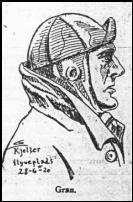 On June 28 Carter and Gran were ready for their flight to Stockholm. Just before midnight they left Kjeller and flew without any problems to Stockholm, where they landed at Gjärdet on June 29 at 02.30 am. The first flight between Oslo and Stockholm had been accomplished. Now it may seem strange that they flew during the night, but actually there is near 24 hours daylight at that time of the year. They actually flew in dusk.
On June 28 Carter and Gran were ready for their flight to Stockholm. Just before midnight they left Kjeller and flew without any problems to Stockholm, where they landed at Gjärdet on June 29 at 02.30 am. The first flight between Oslo and Stockholm had been accomplished. Now it may seem strange that they flew during the night, but actually there is near 24 hours daylight at that time of the year. They actually flew in dusk.
Carter and Gran had beaten the Handley Page O/400, which arrived the following evening. In Stockholm the French pilot Etiènne was also ready to make the first flight in the opposite direction. As Tryggve Gran he too received the permit on June 30. Larry Carter and Tryggve Gran started their return flight to Kristiania soon afterwards. On June 30 they left Stockholm ahead of Etiènne. After to have passed Örebro (Sweden) the engine took fire due to a broken petrol tube. They turned off the engine and glided down. After the rough landing and during a renewed take-off the plane went up in flames and was destroyed beyond repair. Carter only broke his nose when he was thrown out of the aircraft after the landing. Gran had only minor injuries. Their aircraft however was lost.
But what about Captain Meisterlin and his aircraft?
Captain Meisterlin was interested to fly his giant Handley Page O/400 to Stockholm and København. Since March 18, 1920 Handley Page Ltd was sole agent for the sales of surplus aircraft. Captain Meisterlin had bought at Handley Page’s storage of surplus aircraft three flying boats type Norman Thompson N.T.2B. He paid for them from his private assets. But he thought that the aircraft could be used for civil flying as well and that his to be formed airline company could buy the three flying boats from him. The Norman Thompson N.T.2B was a two seat wooden flying boat powered by one 160 hp Breadmore pusher. The first aircraft was delivered in June 1920 and was to be sold to the new Norwegian airline company Thor Thangvalds Flyveselskap AS. Ltn Thor Thangvald and Fred. Kierulf formed this company on January 24, 1920 in Kristiania. Their plan was to open regular air services with English flying boats and the start of the season was set at June 1920. The N.T.2B was found unsuitable and LFG-aircraft from the Netherlands were never delivered. The first aircraft registered (previous identity N2275) was sold in January 1920 to Captain Meisterlin and arrived in Horten for assembly on June 5, 1920. It was registered as N-12 on June 22, 1920 and Captain Meisterlin offered the Norwegian naval pilot Hallvard Næss the job of pilot. The same day the second N.T.2B was registered: N-13 (previous identity N2288), while the last imported aircraft was not registered or assembled at all. The registration N-14 was reserved but not taken up.
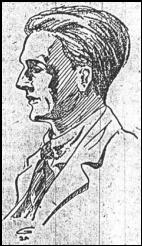 Captain Meisterlin planned to fly the Handley Page O/400 from Kjeller to Karlstad, make a landing there and meet up with the newly acquired Norman Thompson N.T.2B, N-13 with Hallvard Næss and fly in formation to Stockholm. But it was advisable to have an experienced English pilot in the Handley Page as well and so the English sergeant W Rogers (see drawing) was hired from Handley Page Ltd. Unfortunately, a few days after his arrival in Norway he was involved in a motorcycle accident on the bumpy Norwegian roads. The doctor advised him to take it easy for a few days and thus the departure for Stockholm had to be postponed. And so it was not until June 29 that the flight to Stockholm could start.
Captain Meisterlin planned to fly the Handley Page O/400 from Kjeller to Karlstad, make a landing there and meet up with the newly acquired Norman Thompson N.T.2B, N-13 with Hallvard Næss and fly in formation to Stockholm. But it was advisable to have an experienced English pilot in the Handley Page as well and so the English sergeant W Rogers (see drawing) was hired from Handley Page Ltd. Unfortunately, a few days after his arrival in Norway he was involved in a motorcycle accident on the bumpy Norwegian roads. The doctor advised him to take it easy for a few days and thus the departure for Stockholm had to be postponed. And so it was not until June 29 that the flight to Stockholm could start.
The weather that day looked fine and Captain Meisterlin wanted to start on June 30, at 7 am. But soon one of the officers said that he could smell the so-called cellulose-air from the paper-mill factories in Moss and Sarpsborg (some 60 km away) and that meant southern (and unfavourable) winds and bad flying weather. During the night of 29th to 30th the wind got stronger and the clouds were low. Rain started to poor down as well. It was not much better in Stockholm either. Captain Meisterlin decided that if they would take off the next day, the landing at Karlstad would be cancelled and they would only meet up in the air with the Norman Thompson N.T.2B flying boat to fly in formation to Stockholm.
In the afternoon of Wednesday June 30, 1920 the weather improved and after a meeting between Captain Meisterlin and Lieutenant Gottenborg it was decided to depart for Stockholm in the evening. Together with his fellow passengers Captain Meisterlin arrived by private car from Kristiania at Kjeller Airport, where G-EAKE was ready for take off. The following passengers boarded the aircraft:
Pilot: Sergeant W Rogers.
Mechanic: Donovan.
Observers: Captain Wilhelm Meisterlin and Lieutenant Brynjulf Gottenborg.
Passengers: Dr. Nicolaysen, Mrs Astrid Meisterlin and the Norwegian journalist Mr Haakon Qviller (form the newspaper Aftenposten).
At 06.50 pm the Handley Page O/400, G-EAKE, departed for the last time from Kjeller and despite the strong winds it climbed to its cruising altitude at 2,440 metres (8,000 feet). The average speed that day was 100 kmh. Donovan explained Mrs Meisterlin under the first leg of the trip how they would fly to Karlstad and Stockholm. They crossed the Norwegian-Swedish border at 7.35 pm and Arvika at 7.55 pm. The clouds were by now getting thicker and at 8.25 pm they flew above Karlstad in 1,000 metres. They looked for Hallvard Næss and his Norman Thompson N.T.2B flying boat N-13, but in vein. He was delayed. At 9 pm they cross a landscape with thousands of tree and no possibility for an emergency landing. By now it was dark and only the fire coming from the exhaust pipe lighted up the sky. At 9.50 pm they flew above the large lake Mälaren and could enjoy a beautiful view. Donovan said, “Thumbs up – Stockholm!”, when at 11.20 pm a large city was in sight. But instead of going down, the Handley Page O/400 continued in the eastern direction and ended up above the lovely archipelago north of Stockholm. They started to fly around in circles and Donovan said, “I think they have lost themselves”. It was now decided to find as soon as possible a suitable landing site and finally the crew found a field that looked good enough. They flew in low altitude above houses and fields and finally land safely in a cornfield. Sergeant Rogers thought that the field was a regular meadow, but it turned out to be a cornfield. The aircraft suffered no damages.
Haakon Qviller wrote in his newspaper that he heard Dr. Nicolaysen say: “I say, that is a coincident to meet you here, dear lady. Did your mother received the roses I sent her a while ago?”. The lady’s voice answered: “Good evening doctor, where did you come from in the middle of the night and in an aeroplane as well!” It turned out that the two had met each other before. The crew and the passengers were transported to the Östanå Herregaard, an estate owned by the Bostrøms family. Here they spent the night. But what had happened with Næss and his flying boat?
Lieutenant Næss planned to fly from the naval air base at Horten via Fredrikstad and Tistedalen to Karlstad, where he would meet the Handley Page O/400. The Swedish ship owner Bernhard Meyer was to escort him as guide, since Næss was not too well known in this area. In the morning of June 30, Lieutenant Næss was ready for departure, but just before the start from the waters the engine had to be checked again. This delayed his departure and thus he did not start in time in order to be able to meet the Handley Page near Karlstad. In stead he departed from Horten and flew directly to Stockholm, where he landed on June 30.
The end of a beautiful plane
The following day the crew together Captain Meisterlin returned to the field where sergeant Rogers the night before had landed. The aircraft looked undamaged and therefore it was decided to start that day and proceed to Stockholm and the original landing site at Häsgerstalund. The owner of the manor gathered some local workers, who would help plough a lane through the cornfield. The lane was 5 metres wide and 300 metres long. At 3 pm the “runway” was ready and crew and passengers boarded the plane after thanking the hosts for the hospitality. Rogers switched on the engines and slowly the aircraft started on its take-off. It was however soon clear that the lane was not wide enough and that the two metres high corn touched the wings making the aircraft unstable. Sergeant Rogers tried to keep the aircraft straight, failed to do so and instead he tried to lift the aircraft from the field. By now the corn had twisted itself into the undercarriage and the aircraft crashed on its noose, tipping nearly completely around. Some were thrown out of the aircraft, while others were trapped into the fuselage. After the crash Sergeant Rogers shouted to turn off the petrol in order to avoid fire. Lieutenant Gottenborg managed to get out of the aircraft and ran to Captain Meisterlin, Donovan and Sergeant Rogers in order to free them. Donovan was the one with the worst injuries. He had burns in his face and on its hands and was in great pain. He managed to get out by himself.
To get out Captain Meisterlin and Sergeant Rogers from the wreckage help was needed from the local workers. Sergeant Rogers’s leg injury (from the motor cycle accident in Norway) had worsened and he and Donovan were taken by stretcher to the ambulance and driven to the hospital in Östanå. Fortunately Dr. Nicolaysen was not hurt and could offer first aid. Mrs Meisterlin and Lieutenant Gottenborg were all unhurt and the journalist Qviller had broken his arm. A Swedish newspaper indicated that the broken arm was self-inflicted!
Wilhelm Ramm told me about the dramatic events after take-off: “She (Mrs Meisterlin – RM) sat in a wicker chair in the aircraft and there was an open bomb hatch in front of her. The English pilot screamed after the crash “fire-fire-fire”, but fortunately there was no fire. After this episode Mrs Meisterlin never sat a foot in an aircraft! And she kept that promise”.
Finally, the aircraft was now a total wreck and was damaged beyond repair. The flight to Stockholm and København was subsequently cancelled.
This meant the end of the Handley Page O/400, G-EAKA. Stockholm was never to see the aircraft and a flight from Stockholm to København was now also out of the question. One month later, Tancred Ibsen (grandson of the famous Norwegian writer Hendrik Ibsen) and the passenger Johe Wiers-Jenssen in their Hansa Brandenburg W.29, N-5 accomplished the 1,650 km long flight Kristiania – Stockholm – København – Kristiania. He was the first to achieve this.
Meanwhile, Lieutenant Næss remained and performed a number of joy ride and demonstration flights above Stockholm. He was the only one to return safely to Kristiania … by plane that is! More about this event later.
Parts of this article have been compelled with the help of Lennart Andersson, Bernard Martin and Nick Forder. They have supplied us with detailed information about the Handley Page O/400. Furthermore I would like to thank Lars Sundin, Mats Averkvist and Jan Wärnberg for their contribution on the Forum of the Swedish Aviation Historical Society. Lars even went to the archives in Sweden and helped to confirm the accident of the HP O/400 and the AW F.K.8 in Sweden. Thank you very much for your contribution. Picture of the Handley Page O/400 in Denmark are from the Danish magazine Flyvehistorisk Tidskrift of the Danish Historical Aviation Society.
